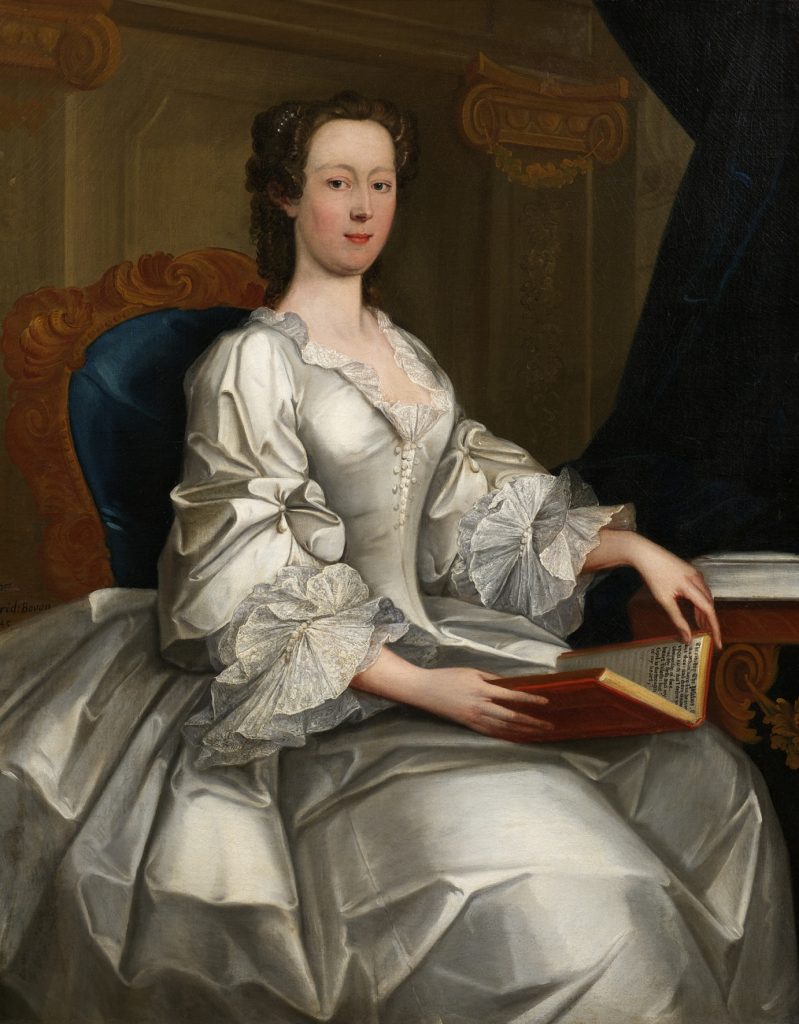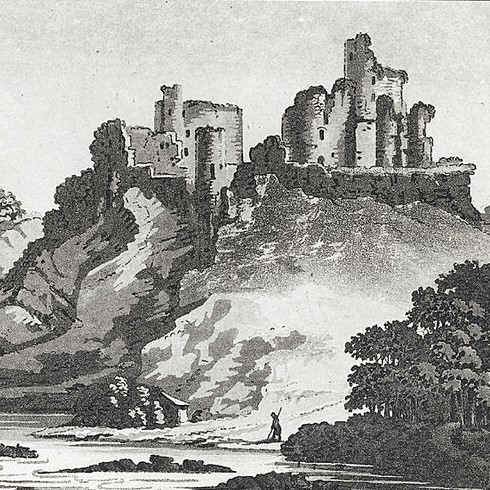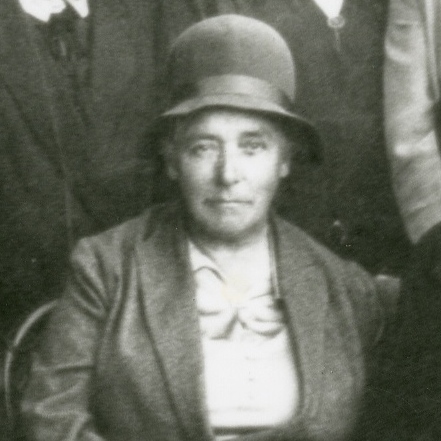Bridget (Vaughan) Bevan aka Madam Bevan
Bridget Bevan was born at Derllys Court, Llannewydd in Carmarthenshire, in 1698. She was the youngest daughter of philanthropist John Vaughan, (a patron of the Society for the Promotion of Christian Knowledge), and his wife, Elizabeth Thomas.
Bridget shared her father’s interest in philanthropy and, in 1731, she used her inheritance to support local preacher, Griffith Jones, in the establishment of an experimental school in Llanddowror, Carmarthenshire. At this time there was no compulsory education in Wales and most people could not read or write.
This led to the birth of an innovative system of teaching known as the Welsh Circulating Schools system. The schools would move from parish to parish, teaching local people how to read for 3 months at a time. The teaching was carried out through the medium of Welsh (literally and figuratively ‘speaking’ to people in their own language) and was based around the teachings of the Bible. Madam Bevan became chief patron and advisor to Griffith Jones and poured her wealth into funding more circulating schools.
Later, Jones lived with Bridget following the death of his wife in 1755. When he died in 1761, she singularly assumed management of the project, displaying ‘considerable business acumen and organisational skills’. Between 1736 and 1776, 6,321 schools were founded and 304,475 scholars of all ages were taught. It is estimated that at this time half the population of Wales had attended a circulating school, and that the nation achieved one of the highest literacy rates in Europe. The educational initiative was hailed as a huge success and, in 1764, Catherine the Great of Russia, ordered her ministers to make enquiries about the scheme.
Bridget Bevan died at Laugharne, Carmarthenshire in 1779, and left £10,000 to the circulating schools. However, some of her family disputed her will and the case went into Chancery, where it remained for thirty years. During this time, her legacy grew to over £30,000 and when it was released in 1804, it was utilised for the educational purposes intended by Bridget.
Ganed Bridget Bevan yn Derllys Court, Llannewydd yn Sir Gaerfyrddin, yn 1698. Hi oedd merch ieuengaf y dyngarwr John Vaughan, (noddwr y Gymdeithas er Hybu Gwybodaeth Gristnogol), a’i wraig, Elizabeth Thomas.
Rhannai Bridget ddiddordeb ei thad mewn dyngarwch ac, yn 1731, defnyddiodd ei hetifeddiaeth i gefnogi’r pregethwr lleol, Griffith Jones, i sefydlu ysgol arbrofol yn Llanddowror, Sir Gaerfyrddin. Bryd hynny, nid oedd addysg orfodol yng Nghymru ac ni allai’r rhan fwyaf o bobl ddarllen nac ysgrifennu.
Arweiniodd hyn at enedigaeth system addysgu arloesol a adwaenwyd fel system Ysgolion Cylchynol Cymru. Symudai’r ysgolion o blwyf i blwyf, gan addysgu pobl leol sut i ddarllen am 3 mis ar y tro. Addysgwyd trwy gyfrwng y Gymraeg (gan ‘siarad’ â phobl yn eu hiaith eu hunain, yn llythrennol ac yn ffigurol’) a sylfaen yr addysg oedd dysgeidiaeth y Beibl. Daeth Madam Bevan i fod yn brif noddwr a chynghorydd i Griffith Jones a thaflodd ei chyfoeth at ariannu mwy o ysgolion cylchynol.
Yn ddiweddarach, bu Jones yn byw gyda Bridget yn dilyn marwolaeth ei wraig yn 1755. Pan fu farw Jones yn 1761, aeth ati ar ei phen ei hun i reoli’r prosiect, gan arddangos ‘craffter busnes a sgiliau trefnu sylweddol’. Rhwng 1736 a 1776, sefydlwyd 6,321 o ysgolion ac addysgwyd 304,475 o ysgolorion o bob oed. Amcanir, bryd hynny, fod hanner poblogaeth Cymru wedi bod mewn ysgol gylchynol, a bod y genedl wedi cyrraedd un o’r cyfraddau llythrennedd uchaf yn Ewrop. Gwelwyd y fenter addysgol hon fel llwyddiant ysgubol, ac, yn 1764, gorchmynnodd Catherine Fawr o Rwsia i’w gweinidogion i ymholi am y cynllun.
Bu farw Bridget Bevan yn Nhalacharn, Sir Gaerfyrddin, yn 1779, a gadawodd £10,000 i’r ysgolion cylchynol. Serch hynny, dadleuodd rhai o’i theulu yn erbyn yr ewyllys ac aeth yr achos i’r Siawnsri, lle arhosodd am dri deg o flynyddoedd. Yn ystod y cyfnod hwn, cynyddodd ei chymynrodd i dros £30,000 a phan gafodd ei ryddhau yn 1804, cafodd ei ddefnyddio at y dibenion addysgol a fwriadwyd gan Bridget.

With thanks to Carmarthen Museum





